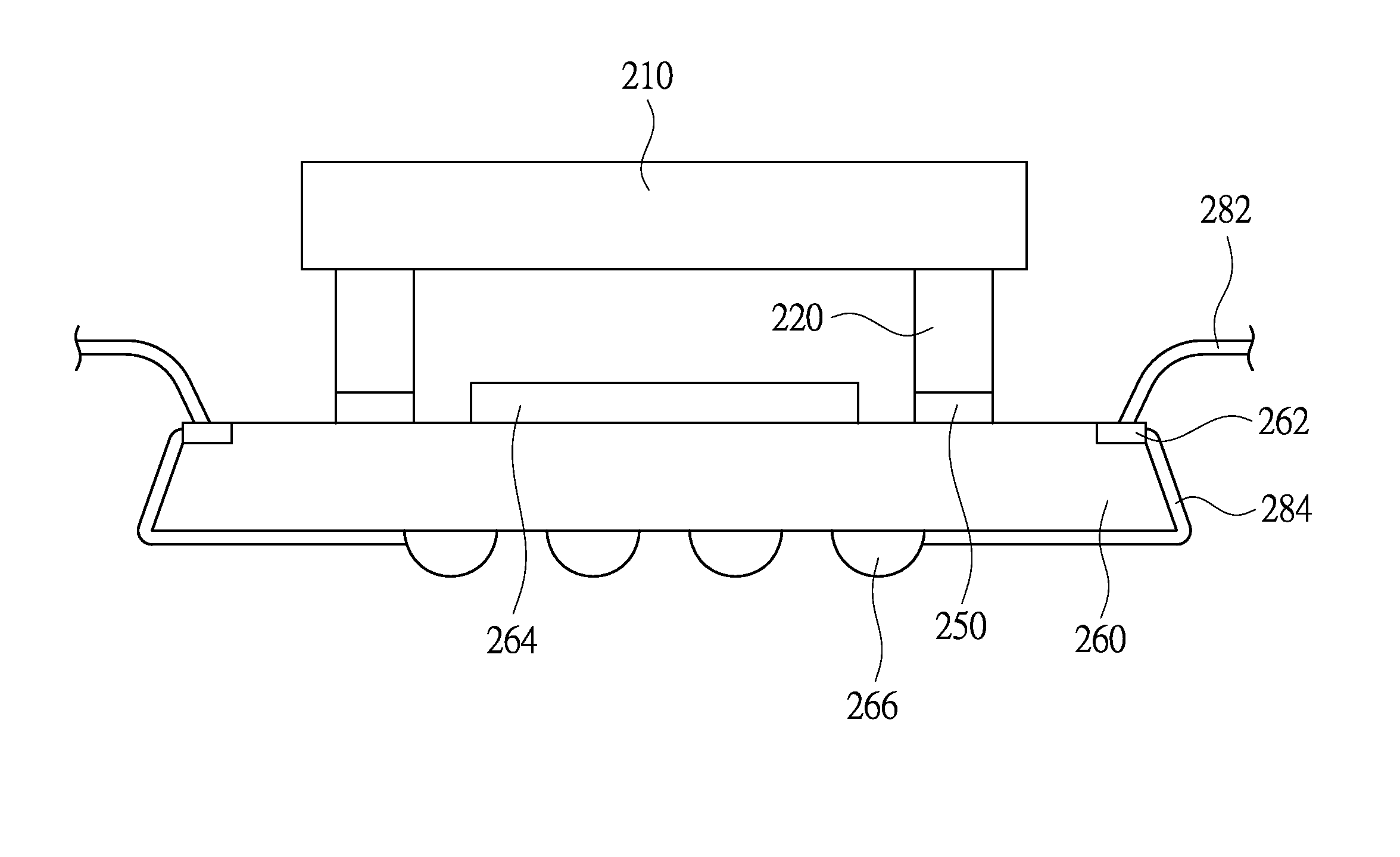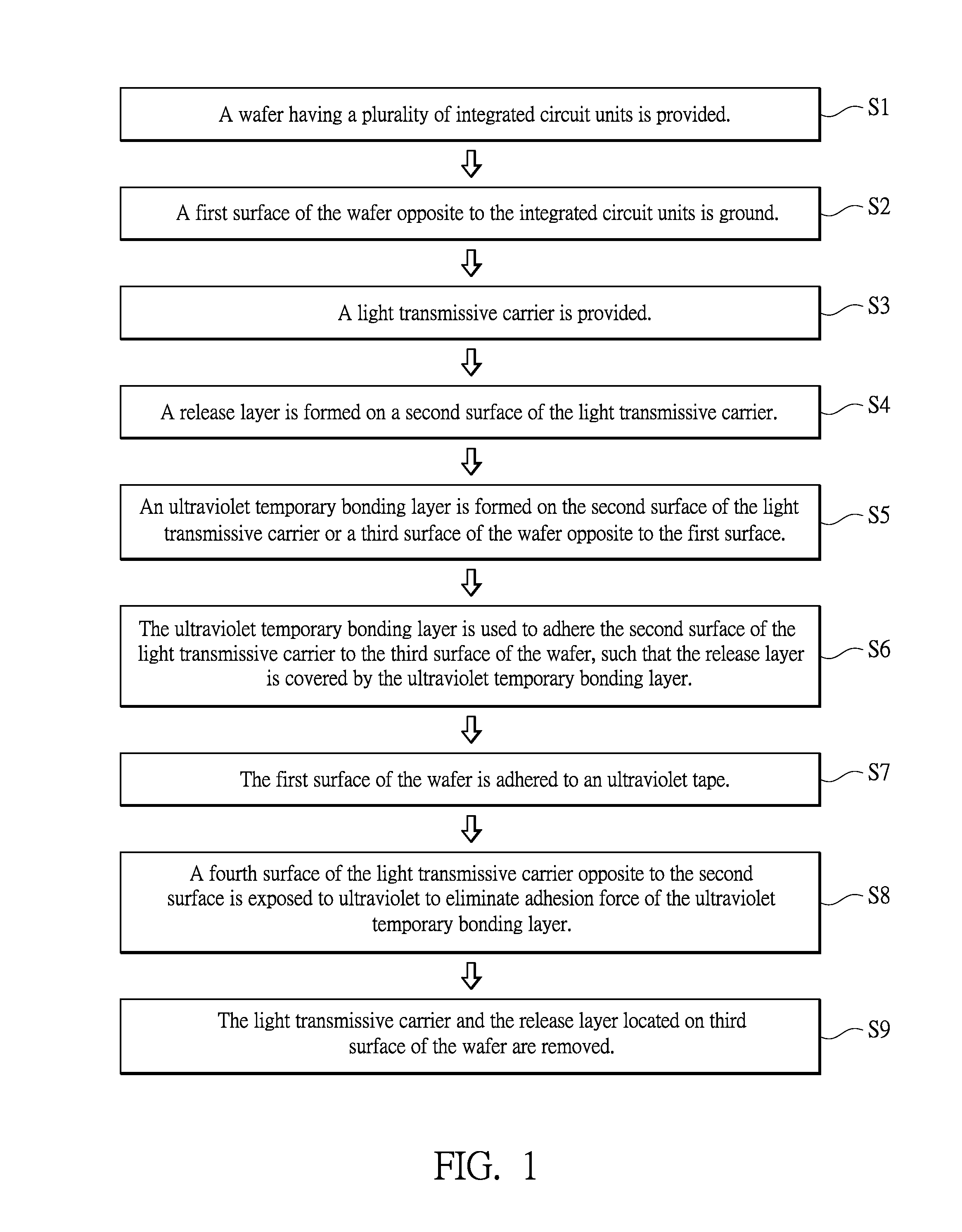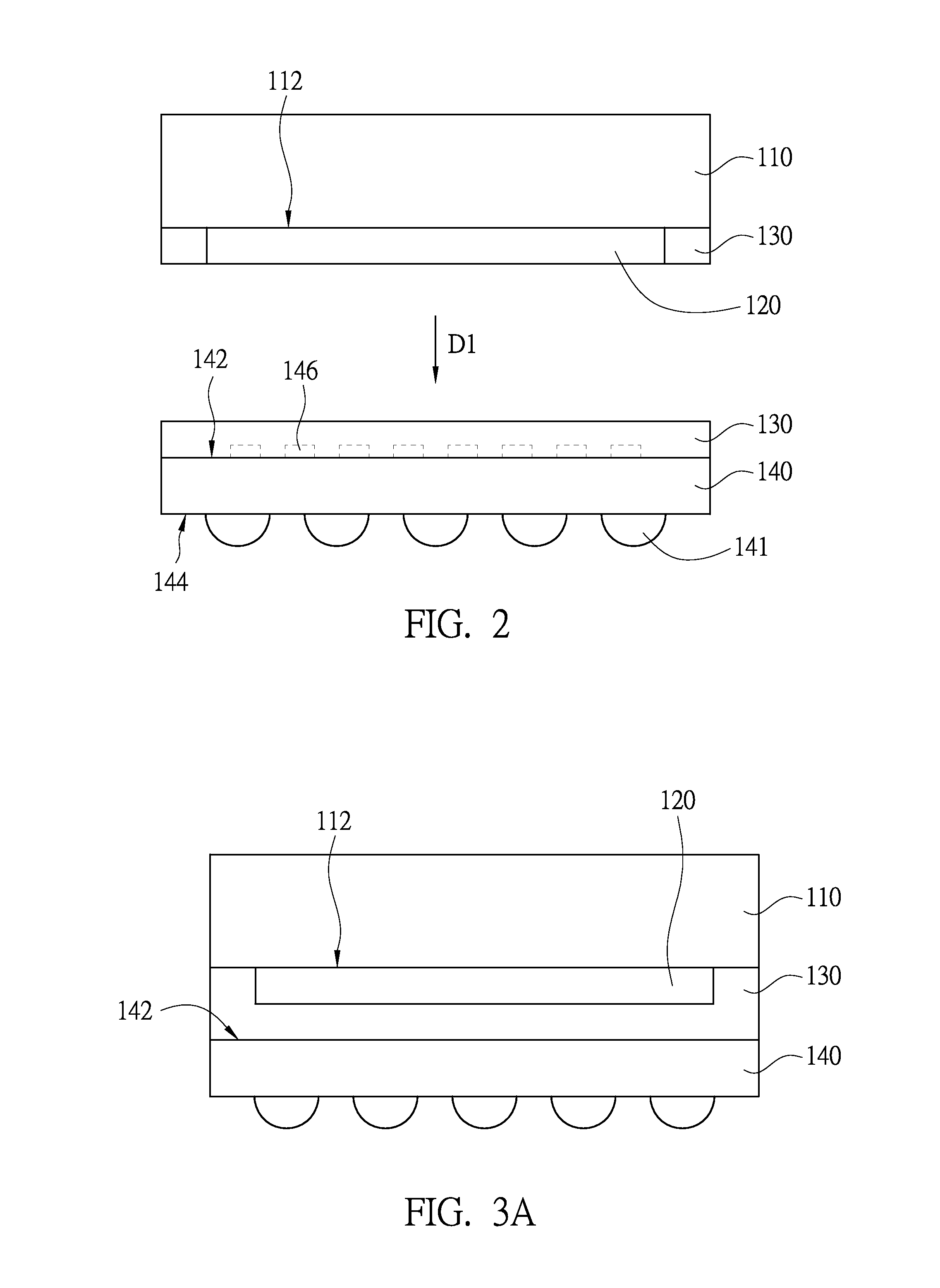Wafer packaging method
a packaging method and wafer technology, applied in the direction of basic electric elements, electrical equipment, semiconductor devices, etc., can solve the problems of easy cracking of the frame, difficult movement of the wafer, and difficulty in the placement of the wafer on the iron frame, so as to improve the yield rate of the wafer and improve the convenience of the wire bonding process.
- Summary
- Abstract
- Description
- Claims
- Application Information
AI Technical Summary
Benefits of technology
Problems solved by technology
Method used
Image
Examples
Embodiment Construction
[0051]Reference will now be made in detail to the present embodiments of the invention, examples of which are illustrated in the accompanying drawings. Wherever possible, the same reference numbers are used in the drawings and the description to refer to the same or like parts.
[0052]FIG. 1 is a flow chart of a wafer packaging method according to one embodiment of the present invention. In step S1, a wafer having a plurality of integrated circuit units is provided. Thereafter in step S2, a first surface of the wafer opposite to the integrated circuit units is ground (“ground” is referred to as the verb tense of “grind”). Next in step S3, a light transmissive carrier is provided. Thereafter in step S4, a release layer is formed on a second surface of the light transmissive carrier. Next in step S5, an ultraviolet temporary bonding layer is formed on the second surface of the light transmissive carrier or a third surface of the wafer opposite to the first surface. Thereafter in step S6...
PUM
 Login to View More
Login to View More Abstract
Description
Claims
Application Information
 Login to View More
Login to View More - R&D
- Intellectual Property
- Life Sciences
- Materials
- Tech Scout
- Unparalleled Data Quality
- Higher Quality Content
- 60% Fewer Hallucinations
Browse by: Latest US Patents, China's latest patents, Technical Efficacy Thesaurus, Application Domain, Technology Topic, Popular Technical Reports.
© 2025 PatSnap. All rights reserved.Legal|Privacy policy|Modern Slavery Act Transparency Statement|Sitemap|About US| Contact US: help@patsnap.com



